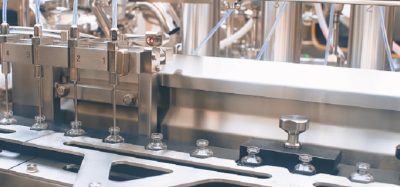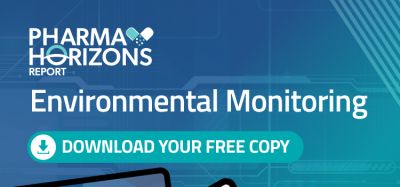Are the needs of the pharmaceutical industry being met?
Posted: 25 January 2007 | | No comments yet
Subsequent to the publication of the PDA technical Report Number 33 in 20001 there has been a multitude of articles published in pharmaceutical reviews and commentaries with regard to rapid microbial methods (RMM). The majority of these articles cover, to a greater or lesser degree, the technologies available and summaries of the requirements for validation, implementation and regulatory acceptance. There have also been some articles that have explored the potential reasons for the relatively slow uptake of alternative microbiological testing methods. While these articles address valid issues, few explore in detail the further possibility for the slow uptake; the appropriateness of the currently available RMM technologies.
Subsequent to the publication of the PDA technical Report Number 33 in 20001 there has been a multitude of articles published in pharmaceutical reviews and commentaries with regard to rapid microbial methods (RMM). The majority of these articles cover, to a greater or lesser degree, the technologies available and summaries of the requirements for validation, implementation and regulatory acceptance. There have also been some articles that have explored the potential reasons for the relatively slow uptake of alternative microbiological testing methods. While these articles address valid issues, few explore in detail the further possibility for the slow uptake; the appropriateness of the currently available RMM technologies.
Subsequent to the publication of the PDA technical Report Number 33 in 20001 there has been a multitude of articles published in pharmaceutical reviews and commentaries with regard to rapid microbial methods (RMM). The majority of these articles cover, to a greater or lesser degree, the technologies available and summaries of the requirements for validation, implementation and regulatory acceptance. There have also been some articles that have explored the potential reasons for the relatively slow uptake of alternative microbiological testing methods. While these articles address valid issues, few explore in detail the further possibility for the slow uptake; the appropriateness of the currently available RMM technologies.
While the pharmaceutical industry could probably provide many examples where one methodology could be applied to one or two of their products, we seem to be stuck in a perpetual ‘talking-shop’ of the technologies listed in PDA’s technical document. However, do the currently available and ‘accepted’ techniques offer real long-term advantages over traditional methods?
Current status
The question often asked in RMM articles is, “why have more RMM method submissions not been made?” The reasons usually given include cost of implementation, IQ/OQ/PQ, acceptance by the regulatory authorities et cetera. However, there is much information in the literature on gaining regulatory acceptance and many speakers present at industry seminars and conferences on the topic – both from pharmaceutical companies and regulatory authorities. In addition, most of the system suppliers now offer support in the building of strategic business cases and in either designing or actually performing full IQ/OQ/PQ. With such support and guidance, however, we still appear to be reluctant to change our current practices.
What are the most appropriate uses of RMM?
While RMM were first discussed as replacements for microbiological finished product (FP) tests (so often the bottleneck in product release) most recent literature discusses RMM in relation to PAT (see recent issues of European Pharmaceutical Review for examples2). However, the natural progression of PAT is to drive quality into the process and drive out the requirement for off-line testing and its inherent time restrictions. Anthony Cundell discusses the advantages of RMM as methods by which a high through-put of rapid results can help in process control and product quality assurance2. However, the RMM currently available do not offer near-line testing capabilities (with perhaps the exception of LAL testing), making their use as aids to process control open to question. Whether or not you agree with this statement, there is a body of opinion within the industry that believe we will never be allowed to move away from FP testing3. Therefore, while in the short- to medium-term this is likely to be true, there is still the matter of replacing the traditional FP test with alternative methods to address.
Most current RMM are generally a compromise, with those sensitive enough to achieve low limits of detection often not providing identification, or producing quantitative analyses. Therefore, particularly on non-sterile products with a specification that includes total count and absence of specified organisms, two RMM are needed to replace the traditional method, which in itself are actually two methods; plate count and enrichment. In practice, RMM tend to be used to replace either the quantative or qualitative parts of the FP test and, while this may make significant improvements to sample through-put and turn-around time, particularly in the case of clean non-sterile products, it still represents a compromise. By entirely replacing the traditional FP test, the majority of RMM probably have a better fit in the replacement of sterility tests.
What are the real alternatives?
If we were able to demand the ultimate RMM its attributes would include the following:
- Rapidity
- Rapid throughput
- Low test cost
- Ease of use
- Quantitative and qualitative
- Sensitivity at least equivalent to current techniques
- The ability to work on a range of product matrices
- The ability to be applicable to both sterile and non-sterile products
- Identification of organisms detected
If the list of currently available techniques (ATP, Impedance, CO2/O2 detection, headspace pressure, various cytometric techniques, micro imaging) is considered, it is clear that there isn’t a single method that will meet all these criteria. Impedance testing can be used as an illustration of the problems with the currently recommended RMM. This test is extremely useful in a research and development environment, for example in allowing rapid through-put screening of the robustness of multiple trial formulations. However, as a FP test or in-process control, the level of validation per product/sample-type and recovery medium is prohibitive. The system must be calibrated for each test condition and micro-organism if ‘time-to-detection’ is to be equated to cfu/ml. This becomes even more complex when you don’t know if you are dealing with a pure or mixed population of contaminants. Therefore, this system’s true value of being able to estimate the initial sample population in a QC/QA environment is questionable. What impedance potentially offers is a compromise, which may be of use in the testing of non-sterile, clean products. Similar compromises are required for the other RMM technologies.
However, the technology that could potentially bring all the above criteria together in one test is currently on the PDA list, but is regarded by the pharmaceutical industry as an identification method: polymerase chain reaction (PCR). The ability to detect and characterise nucleic acid is very likely to be the way forward. This technology lends itself to miniaturisation, automation and huge through-put. The levels of automation currently in design have potential to allow ease of use by technicians as well as experienced microbiologists. The acceptance of the qualities of this science is absolute in the clinical/research and bio-alert arenas and it is to where the pharmaceutical industry should look.
Indeed some of the top commentators on pharmaceutical RMM have previously discussed nucleic acid technologies, usually in brief, at the end of their article. For example, Cundell described PCR as a promising new technology2. This description highlights the conservative nature of the industry in embracing change and may go some way to underlining our problem in finding a truly suitable alternative method: PCR is hardly a new technology! The influence of PCR technologies on pharmaceutical microbiology has so far been limited to identification techniques. However, the potential of PCR technologies is already being realised by the increasing demand from the ‘bio-alert’ sector for the rapid and reliable detection of specified bio-weapons and in clinical microbiology for near-patient testing. The focus here is very much on nucleic acid-based technologies. The focus on nucleic acid technologies is likely to reap rewards for the pharmaceutical industry in the medium- to long-term.
While one of the current disadvantages of nucleic acid based techniques is the specificity to named organisms (no universal bacterial primer has, to the author’s knowledge, been validated to a standard the pharmaceutical industry would require), the high through-put of the next generation real-time polymerase chain reaction (PCR) detection tests could possibly negate this disadvantage. It is also acknowledged that not all the problems with regard to the detection of nucleic acid from dead microbial cells are yet solved (mRNA detection techniques remain the preserve of highly specialised research laboratories). There is certainly some development needed before nucleic acid techniques can solve our FP testing problems.
Vendor-industry partnerships
The goal of the pharmaceutical microbiologist is to replace the agar plate and enrichment broth. The adaptation of ‘second-hand’ technologies has not proved successful for most purposes. Therefore, should we as an industry be communicating our ‘user requirement specification’ and inviting true partnership with technology companies in order to define our needs and develop specific methodologies to address them? Don Singer has previously advocated two points that encourage such partnerships: customised systems are better, with the microbiologist being integral to their design and, in the next five years it is anticipated that more partnerships with vendors, together with the continued development in areas such as nucleic acid technologies, will be seen4.
Not too long ago some industry representatives were invited to a “Blue Sky” session with a well known supplier of an RMM system. They were interested by the promise of discussion on what the industry wants from an RMM. They were disappointed to learn that the discussion was, in reality, a sales-pitch for the latest micro-imaging system that could detect growth on an agar plate more rapidly than the human eye. Such advances are not going to solve our FP/in-process testing issues. However, increasingly, there are technology specialists who have the capability to work in partnership with the pharmaceutical industry to design tests based on the most advanced, cutting edge platforms. In addition, many of the reagent/system providers working with the clinical and bio-alert ‘industries’, are including in their business models the needs of the QA/QC pharmaceutical sector. The opportunity to set up design partnerships has never been greater. However, such an approach would require a change in the way pharmaceutical companies currently run their RMM programmes. For example, substantial up-front investment of both money and human resource would be needed.
Summary
In summary, the currently available RMM offer their greatest value in highlighting the possibilities of using methods alternative to traditional microbiological analysis. However, these techniques were originally developed for research, clinical and food applications and, as such, represent a compromise to the true needs of the pharmaceutical industry. Until the pharmaceutical industry forms strong technological partnerships with vendors and technical experts then the widespread uptake of RMM will struggle to reach a critical mass needed to truly revolutionise the way we carry out microbiological testing.
References
- PDA. Evaluation, validation and implementation of new microbiological testing methods. PDA J Pharm Sci & Technol 2000; 54 (3), suppl. TR33: 2-9.
- A.M.Cundell. Opportunities for rapid microbial methods. Eur Pharm Rev. 2006; 1: 64-70.
- Microbiologists for Common Sense and Reason. PAT and real time release – Is this proposal supportable? Pharmaceutical Microbiology Forum Newsletter. 2006; 12(1): 7-9.
- T.Lloyd. Solutions for the next stage. Eur Pharm Rev. 2006; 4: 70-75.
Acknowledgements
Thanks to my colleagues on the GSK Microbiology Standards and Strategy team for their support and comments on this article.








